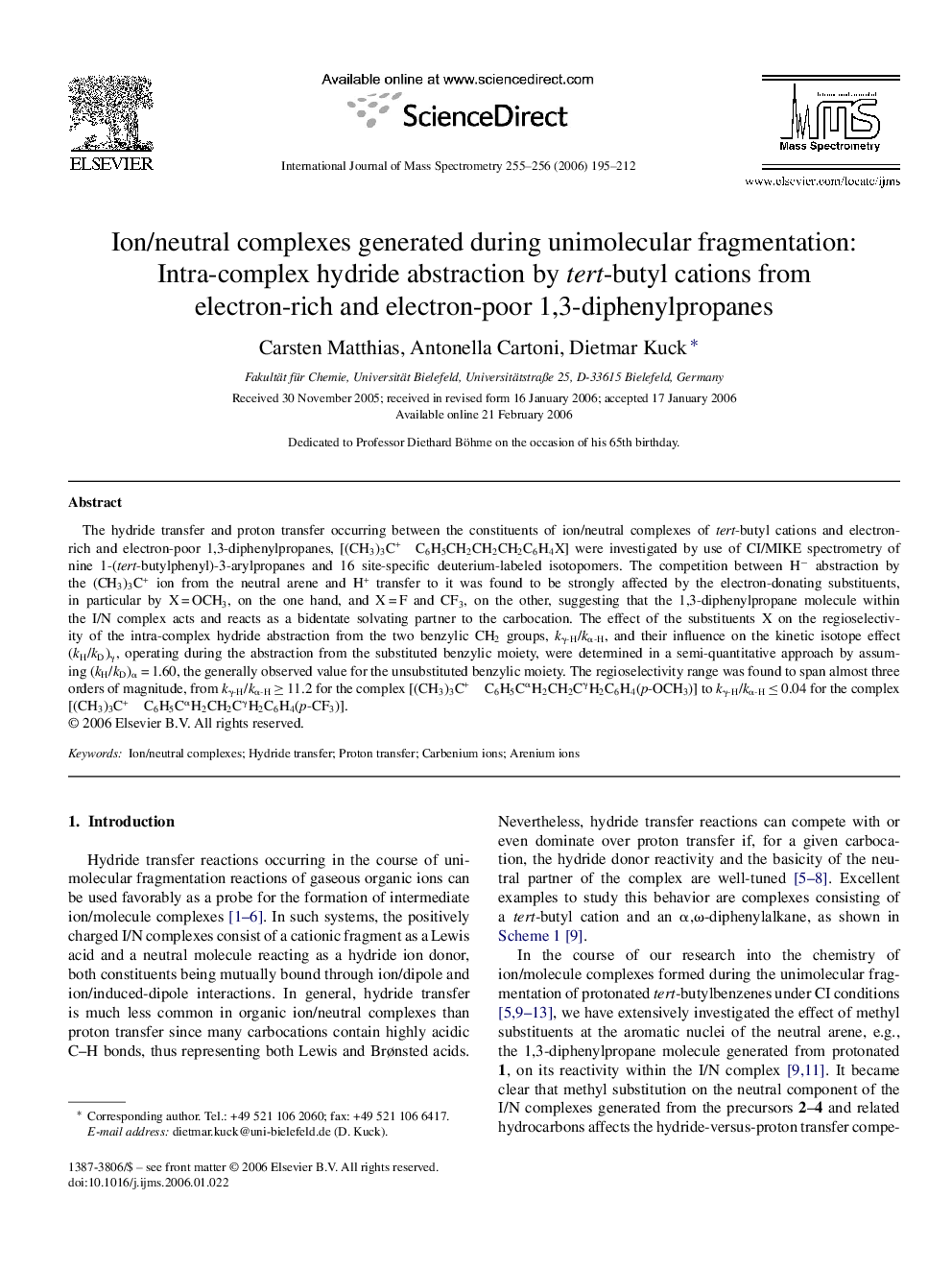| Article ID | Journal | Published Year | Pages | File Type |
|---|---|---|---|---|
| 1194739 | International Journal of Mass Spectrometry | 2006 | 18 Pages |
The hydride transfer and proton transfer occurring between the constituents of ion/neutral complexes of tert-butyl cations and electron-rich and electron-poor 1,3-diphenylpropanes, [(CH3)3C+ C6H5CH2CH2CH2C6H4X] were investigated by use of CI/MIKE spectrometry of nine 1-(tert-butylphenyl)-3-arylpropanes and 16 site-specific deuterium-labeled isotopomers. The competition between H− abstraction by the (CH3)3C+ ion from the neutral arene and H+ transfer to it was found to be strongly affected by the electron-donating substituents, in particular by X = OCH3, on the one hand, and X = F and CF3, on the other, suggesting that the 1,3-diphenylpropane molecule within the I/N complex acts and reacts as a bidentate solvating partner to the carbocation. The effect of the substituents X on the regioselectivity of the intra-complex hydride abstraction from the two benzylic CH2 groups, kγ-H/kα-H, and their influence on the kinetic isotope effect (kH/kD)γ, operating during the abstraction from the substituted benzylic moiety, were determined in a semi-quantitative approach by assuming (kH/kD)α = 1.60, the generally observed value for the unsubstituted benzylic moiety. The regioselectivity range was found to span almost three orders of magnitude, from kγ-H/kα-H ≥ 11.2 for the complex [(CH3)3C+ C6H5CαH2CH2CγH2C6H4(p-OCH3)] to kγ-H/kα-H ≤ 0.04 for the complex [(CH3)3C+ C6H5CαH2CH2CγH2C6H4(p-CF3)].
